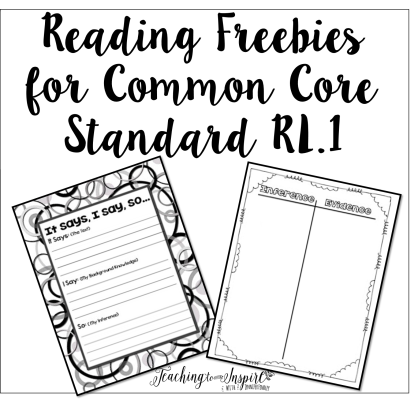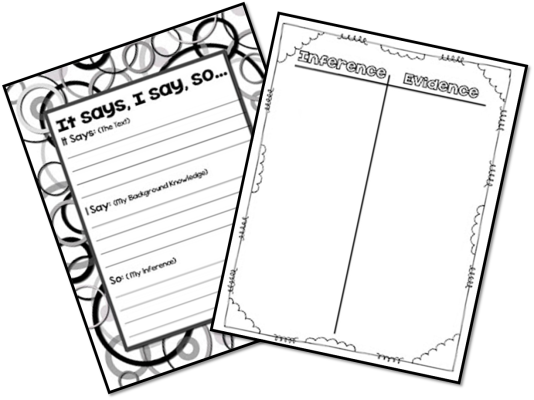I hope everyone had a fabulous weekend! As I mentioned in my last post, I joined another Book Club this summer and we are reading Teaching with the Common Core Standards for English Language Arts. This chapter focuses on RL.1 which is about making inferences and using evidence to support those inferences. Check out post for RL.2 by clicking here and RL.3 clicking here. Make sure you head over to those posts to grab the free printables for those standards.
I really enjoyed reading this chapter for a few reasons. First, it broke down the standards into what was expected in 3rd through 5th and how it changed as the students moved up in the grades. It is important to know what the students should know and where they reading in regards to a skill. I also enjoyed reading the vignettes that showed a snapshot of the standard in a classroom.
This focus of this standard (RL3.1, RL4.1, RL.5.1) is not just on the students understanding the text but more importantly being able use the explicit information in the text to support understanding. Here is a progression of the skill through grades 3-5.
- 3rd graders just need to demonstrate an understanding while referring explicitly to the text.
- 4th graders have to begin making inferences based on what the text says in addition to explaining the text.
- 5th graders have do all of this AND be able to quote the text accurately to support their understand and inferences.
I don’t know about you guys, but I just love the way that expands and builds on the previous grade’s work.
Ok, here are some ideas from me and some from the book!
Ideas for Remediation
The way the standards are set up makes it so much easier (in my opinion) for teachers to plan for remediation for struggling students. If a a 5th grade student is not meeting mastery in a standard, look back at the 3rd and 4th grade standards and see where the breakdown is. Is it a lack of understanding (3rd grade) or not being able to make inferences from explicit information (4th grade)?
Ideas for the Classroom
The section on this standard really focuses on how important it is for the students to have the attitude that Reading is Thinking. This attitude can be fostered through read alouds and modeling by having the students support their predictions with evidence from the text. The vignette used in the book describes how a teacher gets her students brains ready to read by doing some pre-reading strategies based on the cover of the book. However to get their brains ready for the standard, the teacher pushes the students by making them provide explicit information from the title and cover to match their predictions.
As promised here are two free printables that will hopefully help your students practice and apply this standard.










How do you plan to challenge your students to provide that explicit information from the text when they are answering questions or making inferences?
What does "complex text" mean to you?
@Jennifer F.
When I think of text complexity, I think of several factors.
1) Vocabulary- at what level is the vocabulary established both in fiction and non-fiction. Are the words being used in the story more "sight words" or are there many variations and synonyms being used.
2) Length- How LONG is the story/writing. I do realize that very difficult reads can be one page long and easy reads can be 12-300 pages long. However, it takes stamina for students to read ANY piece of reading, and they need practice before being exposed to more intense, longer pieces.
3) Genre/Topic. This is huge for me. Students need to have a sturdy scaffold for many non-fictional pieces of writing because of the unique vocabularies that come with them. This can cause a seemingly easy text to become very cumbersome and overwhelming.
That's my thought on text complexity.
You make them quote from the text to support their inferences, or answers. My students did a lot of this during novel studies. They had to quote from text in order to receive full credit!
Melanie, I do the same! I am always telling my kids the highest grade they could get is a 50 (out of 100) if they don't support their answers with evidence from the text. They were shocked at first, but they got used to it! Imagine if this was started in the primary grades?! That would be awesome!
I really like using Bloom's Taxonomy. I like how the questions go from concrete to abstract thinking. I like to make students answer and think about the concrete questions, so that they can grasp the more complicated questions as we go into them.
Is this book club for anyone? I would love to have more information on it!! I'm going to definitely check out the book.
Great post and freebies! I am a new follower. 🙂
~Tasha
A Tender Teacher for Special Needs
THANK YOU!! 🙂